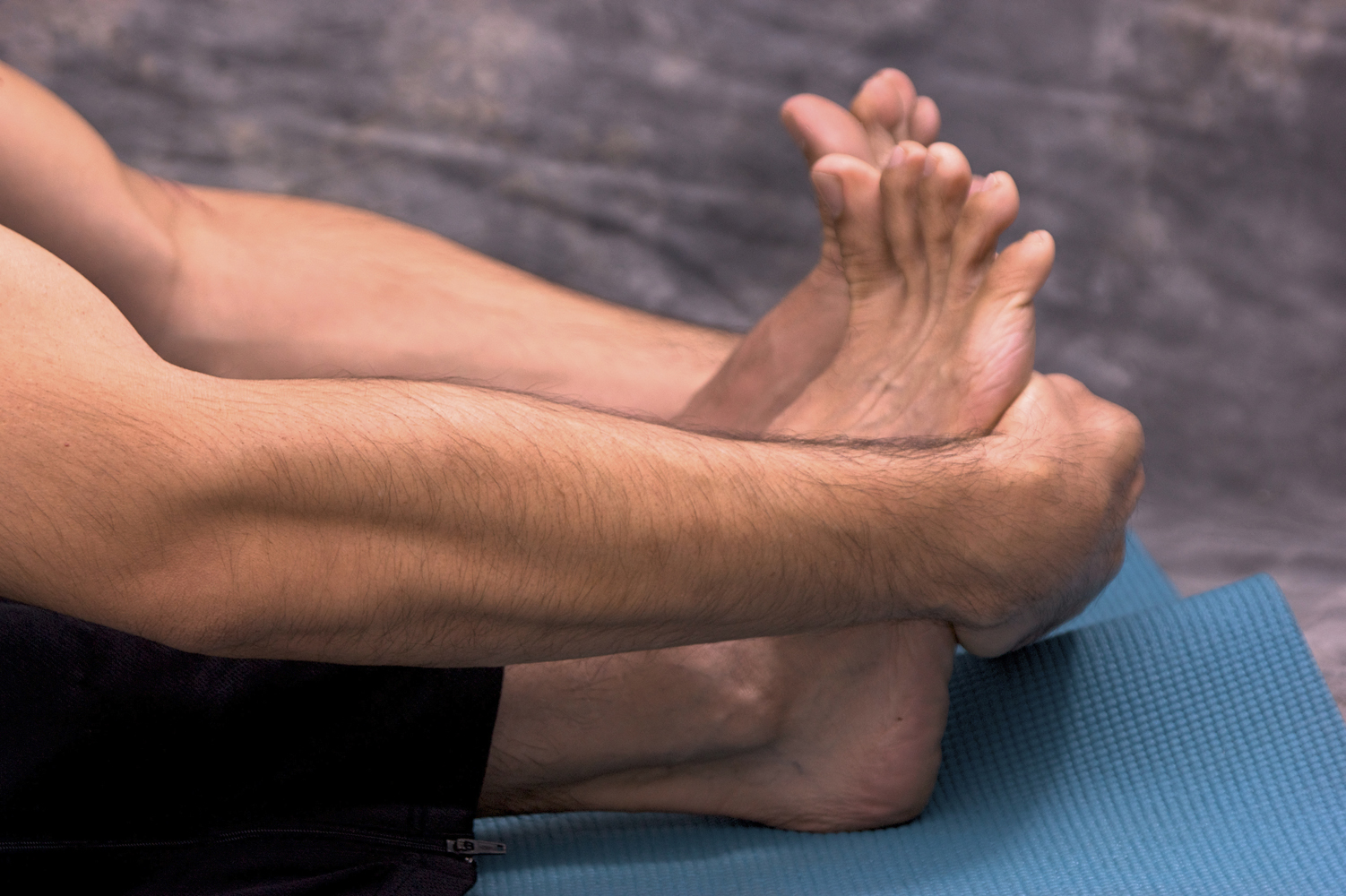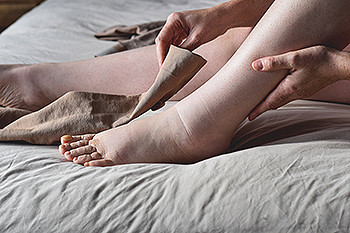Items filtered by date: November 2024
Exercises for Strong and Pain-Free Feet

Simple foot stretches and exercises promote strength, flexibility, and long-term mobility, helping prevent pain and stiffness. Strengthening and stretching the feet can enhance stability, balance, and endurance, making daily activities easier and reducing the risk of injury. One effective exercise is toe curls which involves placing a small towel on the floor, and using your toes to scrunch it toward you, then pushing it away. This strengthens arch and toe muscles, supporting foot mechanics. Another beneficial stretch is the calf stretch. Stand facing a wall, place one foot forward and the other back, keeping the back heel down and leaning forward slightly. This stretch targets the Achilles tendon and calf muscles, reducing tension in the feet. Incorporating such exercises regularly can keep your feet healthy. If you would like to learn more about how you can take care of your feet, it is suggested that you schedule an appointment with a podiatrist who can diagnose any foot or ankle problem, provide treatment, and guide you to additional foot care.
Why Stretching Is Important for Your Feet
Stretching the feet is a great way to prevent injuries. If you have any concerns with your feet consult with the foot specialists from Table Mountain Foot and Ankle. Our doctors will assess your condition and provide you with quality foot and ankle treatment.
Stretching the Feet
Stretching the muscles in the foot is an important part in any physical activity. Feet that are tight can lead to less flexibility and make you more prone to injury. One of the most common forms of foot pain, plantar fasciitis, can be stretched out to help ease the pain. Stretching can not only ease pain from plantar fasciitis but also prevent it as well. However, it is important to see a podiatrist first to determine if stretching is right for you. Podiatrists can also recommend other ways to stretch your feet. Once you know whether stretching is right for you, here are some excellent stretches you can do.
- Using a foam roller or any cylindrical object (a water bottle or soda can will do), roll the object under your foot back and forth. You should also exert pressure on the object. Be sure to do this to both feet for a minute. Do this exercise three times each.
- Similar to the previous exercise, take a ball, such as a tennis ball, and roll it under your foot while seated and exert pressure on it.
- Grab a resistance band or towel and take a seat. If you are using a towel, fold it length wise. Next put either one between the ball of your foot and heel and pull with both hands on each side towards you. Hold this for 15 seconds and then switch feet. Do this three times for each foot.
- Finally hold your big toe while crossing one leg over the other. Pull the toe towards you and hold for 15 seconds. Once again do this three times per foot.
It is best to go easy when first stretching your foot and work your way up. If your foot starts hurting, stop exercising to ice and rest the foot. It is advised that you then see a podiatrist for help.
If you have any questions, please feel free to contact our office located in Wheat Ridge, CO . We offer the newest diagnostic and treatment technologies for all your foot care needs.
Get Professional Care for a Broken Foot or Ankle
What Is Edema?

Edema, or swelling, occurs when excess fluid builds up in the body’s tissues, often affecting the ankles, feet, and legs. Common causes include prolonged sitting or standing, high salt intake, hormonal changes, certain medications, and underlying medical conditions such as heart, kidney, or liver issues. Symptoms typically include noticeable swelling, tightness in the affected area, and discomfort when wearing shoes or socks. The skin may also appear stretched or shiny. Treatment for edema focuses on addressing the underlying cause. Lifestyle changes such as elevating the legs, reducing sodium intake, and staying active can help manage swelling. A podiatrist can provide specialized assessments to determine the cause of edema and recommend effective treatments, including compression therapy and exercises to improve circulation. If you are experiencing persistent swelling, it is suggested that you consult a podiatrist. They can help diagnose the issue and create a tailored treatment plan to restore your foot health.
Swollen feet can be a sign of an underlying condition. If you have any concerns, contact the foot specialists of Table Mountain Foot and Ankle. Our doctors can provide the care you need to keep you pain-free and on your feet.
Swollen feet are a common ailment among pregnant women and people who stand or sit for extended periods. Aging may increase the possibility of swollen feet and patients who are obese often notice when their feet are swelling too. There may be medical reasons why swollen feet occur:
- Phlebitis - A condition that causes the veins to become inflamed and can also cause leg pain.
- Liver disease - This may lead to low blood levels of albumin which is a protein. This can cause fluid in the blood to pass into the tissues and several areas of the body can become swollen.
- Heart failure - When the heart doesn’t pump properly the blood that is normally pumped back to the heart can pool in the veins of the legs causing swollen feet.
- Kidney disease - One of the main functions of the kidneys is releasing excess fluid in the body. This type of condition can make it difficult for the kidneys to function properly, and as a result the feet may become swollen.
- Deep-vein thrombosis (DVT)- This is a serious condition where blood clots form in the veins of the legs. They can block the return of blood from the legs to the heart which may cause the feet to swell. It is important to be treated by a podiatrist if this condition is present.
Swollen feet can also be caused by bone and tendon conditions, including fractures, arthritis, and tendinitis. Additionally, there may be skin and toenail conditions and an infection may cause the feet to swell. Patients who take medicine to treat high blood pressure may be prone to getting swollen feet.
Many patients elevate their feet to help relieve the swelling and this is generally a temporary remedy. When a podiatrist is consulted the reason behind the swelling can be uncovered and subsequently treated.
If you have any questions please feel free to contact our office located in Wheat Ridge, CO . We offer the newest diagnostic tools and technology to treat your foot and ankle needs.
Plantar Warts Come From a Virus

Warts on the feet, particularly plantar warts, are a common skin condition caused by the human papillomavirus, HPV. These warts occur when the virus enters the skin through tiny cuts, breaks, or weak spots, often on the soles of the feet. This virus thrives in warm, moist environments, making public places like swimming pools, locker rooms, and communal showers prime locations for spreading HPV. Walking barefoot in these areas can increase the risk of contracting plantar warts. Plantar warts often appear as small, rough, and grainy lesions, typically on weight-bearing areas such as the heels or balls of the feet. Unlike other types of warts, plantar warts tend to grow inward due to pressure from walking or standing, which can cause a flat appearance and make them difficult to detect at first glance. These warts may have tiny black dots within them, which are small, clotted blood vessels. If you have this type of wart on your foot, it is suggested that you schedule an appointment with a podiatrist for an accurate diagnosis and treatment.
Plantar warts can be very uncomfortable. If you need your feet checked, contact the foot specialists from Table Mountain Foot and Ankle. Our doctors will assist you with all of your foot and ankle needs.
About Plantar Warts
Plantar warts are the result of HPV, or human papillomavirus, getting into open wounds on the feet. They are mostly found on the heels or balls of the feet.
While plantar warts are generally harmless, those experiencing excessive pain or those suffering from diabetes or a compromised immune system require immediate medical care. Plantar warts are easily diagnosed, usually through scraping off a bit of rough skin or by getting a biopsy.
Symptoms
- Lesions on the bottom of your feet, usually rough and grainy
- Hard or thick callused spots
- Wart seeds, which are small clotted blood vessels that look like little black spots
- Pain, discomfort, or tenderness of your feet when walking or standing
Treatment
- Freezing
- Electric tool removal
- Laser Treatment
- Topical Creams (prescription only)
- Over-the-counter medications
To help prevent developing plantar warts, avoid walking barefoot over abrasive surfaces that can cause cuts or wounds for HPV to get into. Avoiding direct contact with other warts, as well as not picking or rubbing existing warts, can help prevent the further spread of plantar warts. However, if you think you have developed plantar warts, speak to your podiatrist. He or she can diagnose the warts on your feet and recommend the appropriate treatment options.
If you have any questions please feel free to contact our office located in Wheat Ridge, CO . We offer the newest diagnostic and treatment technologies for all your foot and ankle needs.
What Is Morton’s Neuroma?

Morton’s neuroma is a painful condition affecting the foot, specifically involving a thickening of the tissue surrounding a nerve, often between the third and fourth toes. This condition can be caused by various factors, including wearing tight shoes, high heels, high foot arches, or engaging in repetitive activities that put pressure on the feet. Symptoms include sharp, burning pain in the ball of the foot, a sensation of having a pebble in the shoe, and tingling or numbness in the toes. These symptoms can worsen with activity and improve with rest. Initial treatment options include wearing wider shoes or using orthotic inserts. However, if symptoms persist or worsen, medical intervention may be necessary. A podiatrist might recommend corticosteroid injections, targeted exercises, or, in severe cases, surgical options to relieve the pressure on the nerve. If you are experiencing symptoms of Morton’s neuroma, it is suggested that you schedule an appointment with a podiatrist for a comprehensive evaluation and effective treatment options.
Morton’s neuroma is a very uncomfortable condition to live with. If you think you have Morton’s neuroma, contact the foot specialists of Table Mountain Foot and Ankle. Our doctors will attend to all of your foot care needs and answer any of your related questions.
Morton’s Neuroma
Morton's neuroma is a painful foot condition that commonly affects the areas between the second and third or third and fourth toe, although other areas of the foot are also susceptible. Morton’s neuroma is caused by an inflamed nerve in the foot that is being squeezed and aggravated by surrounding bones.
What Increases the Chances of Having Morton’s Neuroma?
- Ill-fitting high heels or shoes that add pressure to the toe or foot
- Jogging, running or any sport that involves constant impact to the foot
- Flat feet, bunions, and any other foot deformities
Morton’s neuroma is a very treatable condition. Orthotics and shoe inserts can often be used to alleviate the pain on the forefront of the feet. In more severe cases, corticosteroids can also be prescribed. In order to figure out the best treatment for your neuroma, it’s recommended to seek the care of a podiatrist who can diagnose your condition and provide different treatment options.
If you have any questions, please feel free to contact our office located in Wheat Ridge, CO . We offer the newest diagnostic and treatment technologies for all your foot care needs.

